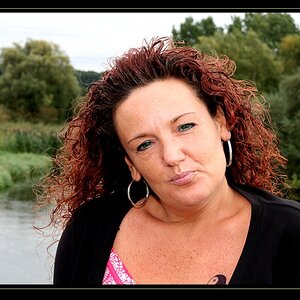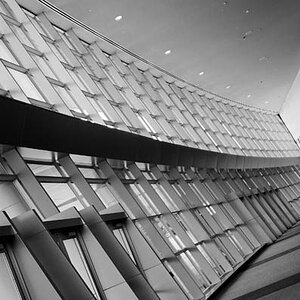Navigation
Install the app
How to install the app on iOS
Follow along with the video below to see how to install our site as a web app on your home screen.

Note: This feature currently requires accessing the site using the built-in Safari browser.
More options
You are using an out of date browser. It may not display this or other websites correctly.
You should upgrade or use an alternative browser.
You should upgrade or use an alternative browser.
The human eye, what can it see?
- Thread starter BLD_007
- Start date
burnws6
TPF Noob!
- Joined
- Nov 28, 2009
- Messages
- 597
- Reaction score
- 1
- Location
- USA
- Can others edit my Photos
- Photos NOT OK to edit
The human eye, what can it see?
What is the ISO range of the eye?
What is the Fstop range of the eye?
Our eye has one shutter speed, what is it?
Just wondering...
Hot chick=
f1.4
ugly naked grandma=
f22
That's all I know
BLD_007
TPF Noob!
- Joined
- Jul 27, 2009
- Messages
- 330
- Reaction score
- 0
- Can others edit my Photos
- Photos OK to edit
The human eye, what can it see?
What is the ISO range of the eye?
What is the Fstop range of the eye?
Our eye has one shutter speed, what is it?
Just wondering...
Hot chick=
f1.4
ugly naked grandma=
f22
That's all I know
should it not be the other way around? With an F22 the hot chick will all be in focus, and with a f1.4 you only have to see the face and the rest would be blurry.
burnws6
TPF Noob!
- Joined
- Nov 28, 2009
- Messages
- 597
- Reaction score
- 1
- Location
- USA
- Can others edit my Photos
- Photos NOT OK to edit
The human eye, what can it see?
What is the ISO range of the eye?
What is the Fstop range of the eye?
Our eye has one shutter speed, what is it?
Just wondering...
Hot chick=
f1.4
ugly naked grandma=
f22
That's all I know
should it not be the other way around? With an F22 the hot chick will all be in focus, and with a f1.4 you only have to see the face and the rest would be blurry.
Oh god....clearly...I wasn't talking in literal terms. I was referring to the general reaction of ones eye (widening or squinting)
Here's your answer
anm90
TPF Noob!
- Joined
- Dec 21, 2009
- Messages
- 148
- Reaction score
- 0
- Location
- San Luis Obispo, CA
- Can others edit my Photos
- Photos OK to edit
I thought of it in terms of depth of field! When you see the hot chick, your eye goes to f/1.4 so all you can see is the hot chick, and when you see the ugly naked grandma you go to f/22 so you can see everything around her and not be forced to stare at the only thing in focus... :lmao:
ann
No longer a newbie, moving up!
- Joined
- May 14, 2007
- Messages
- 4,263
- Reaction score
- 189
- Can others edit my Photos
- Photos NOT OK to edit
it is my understanding that the eye, and of course the brain which is involved can only focus on one plane at a time, so it is basically unimportant which fstop.
If you mean, what can the eye can differentitate then the contrast ratio is "1:10,000. Which is a range of about 14EV". *
* Christian Block
And by the way, the example used in several comments is why a lot of women get turned off my junvile men.
If you mean, what can the eye can differentitate then the contrast ratio is "1:10,000. Which is a range of about 14EV". *
* Christian Block
And by the way, the example used in several comments is why a lot of women get turned off my junvile men.
skieur
TPF Noob!
- Joined
- May 14, 2007
- Messages
- 5,071
- Reaction score
- 204
- Location
- Canada
- Can others edit my Photos
- Photos OK to edit
Well on the dark end of the spectrum, the eye can see at the equivalent of ISO 800, which means that with a digital camera at ISO 1600 or so, you can take a photo of what the eye can't see, because of the lack of light.
I did some shooting down in a mine under the ocean in the pitch dark and in extremely low light. It was quite a challenge.
skieur
I did some shooting down in a mine under the ocean in the pitch dark and in extremely low light. It was quite a challenge.
skieur
- Joined
- Apr 9, 2009
- Messages
- 41,401
- Reaction score
- 5,706
- Location
- Iowa
- Website
- kharrodphotography.blogspot.com
- Can others edit my Photos
- Photos OK to edit
http://en.wikipedia.org/wiki/Human_eye
Dynamic range
The retina has a static contrast ratio of around 100:1 (about 6 1/2 f-stops). As soon as the eye moves (saccades) it re-adjusts its exposure both chemically and geometrically by adjusting the iris which regulates the size of the pupil. Initial dark adaptation takes place in approximately four seconds of profound, uninterrupted darkness; full adaptation through adjustments in retinal chemistry (the Purkinje effect) are mostly complete in thirty minutes. Hence, a dynamic contrast ratio of about 1,000,000:1 (about 20 f-stops) is possible.[3] The process is nonlinear and multifaceted, so an interruption by light merely starts the adaptation process over again. Full adaptation is dependent on good blood flow; thus dark adaptation may be hampered by poor circulation, and vasoconstrictors like alcohol or tobacco.
The eye includes a lens not dissimilar to lenses found in optical instruments such as cameras and the same principles can be applied. The pupil of the human eye is its aperture; the iris is the diaphragm that serves as the aperture stop. Refraction in the cornea causes the effective aperture (the entrance pupil) to differ slightly from the physical pupil diameter. The entrance pupil is typically about 4 mm in diameter, although it can range from 2 mm (f/8.3) in a brightly lit place to 8 mm (f/2.1) in the dark. The latter value decreases slowly with age, older people's eyes sometimes dilate to not more than 5-6mm.
Dynamic range
The retina has a static contrast ratio of around 100:1 (about 6 1/2 f-stops). As soon as the eye moves (saccades) it re-adjusts its exposure both chemically and geometrically by adjusting the iris which regulates the size of the pupil. Initial dark adaptation takes place in approximately four seconds of profound, uninterrupted darkness; full adaptation through adjustments in retinal chemistry (the Purkinje effect) are mostly complete in thirty minutes. Hence, a dynamic contrast ratio of about 1,000,000:1 (about 20 f-stops) is possible.[3] The process is nonlinear and multifaceted, so an interruption by light merely starts the adaptation process over again. Full adaptation is dependent on good blood flow; thus dark adaptation may be hampered by poor circulation, and vasoconstrictors like alcohol or tobacco.
The eye includes a lens not dissimilar to lenses found in optical instruments such as cameras and the same principles can be applied. The pupil of the human eye is its aperture; the iris is the diaphragm that serves as the aperture stop. Refraction in the cornea causes the effective aperture (the entrance pupil) to differ slightly from the physical pupil diameter. The entrance pupil is typically about 4 mm in diameter, although it can range from 2 mm (f/8.3) in a brightly lit place to 8 mm (f/2.1) in the dark. The latter value decreases slowly with age, older people's eyes sometimes dilate to not more than 5-6mm.
- Joined
- Dec 16, 2003
- Messages
- 33,896
- Reaction score
- 1,853
- Location
- Edmonton
- Website
- www.mikehodson.ca
- Can others edit my Photos
- Photos NOT OK to edit
The important part to note is that our eyes are constantly adjusting to what we're looking at.
Take a sunset landscape scene for example. We look at the bright sky, our eyes adjust to it and it looks nice. We then glace down to the much darker foreground. It may take a fraction of a second or longer, but our eyes adjust to it and we can see some or all of the detail.
Our brain puts the whole thing together, so what we remember is a whole scene that looks good.
A still camera, on the other hand, takes exposures one at a time...and each exposure can only have one exposure value. So if you set the exposure for the sky, the foreground will be too dark...if you expose for the foreground, the sky is too bright and gets washed out.
So when you are taking a photo, it helps to think about the dynamic range of your camera/film and know it's limitations. You might see a beautiful scene, but you should be able to recognize if it will make a beautiful photo...or at least realize that a photo won't look like how you remember it. A common thing to do, is to bracket your exposures and then pick the one you like best.
Of course, you can use grad filters or selective editing to help a photo look more like how you remember it...and now it's not hard to implement HDR techniques to blend multiple exposures.
Wow...that was longer than I meant it to be.
Take a sunset landscape scene for example. We look at the bright sky, our eyes adjust to it and it looks nice. We then glace down to the much darker foreground. It may take a fraction of a second or longer, but our eyes adjust to it and we can see some or all of the detail.
Our brain puts the whole thing together, so what we remember is a whole scene that looks good.
A still camera, on the other hand, takes exposures one at a time...and each exposure can only have one exposure value. So if you set the exposure for the sky, the foreground will be too dark...if you expose for the foreground, the sky is too bright and gets washed out.
So when you are taking a photo, it helps to think about the dynamic range of your camera/film and know it's limitations. You might see a beautiful scene, but you should be able to recognize if it will make a beautiful photo...or at least realize that a photo won't look like how you remember it. A common thing to do, is to bracket your exposures and then pick the one you like best.
Of course, you can use grad filters or selective editing to help a photo look more like how you remember it...and now it's not hard to implement HDR techniques to blend multiple exposures.
Wow...that was longer than I meant it to be.
BLD_007
TPF Noob!
- Joined
- Jul 27, 2009
- Messages
- 330
- Reaction score
- 0
- Can others edit my Photos
- Photos OK to edit
The important part to note is that our eyes are constantly adjusting to what we're looking at.
Take a sunset landscape scene for example. We look at the bright sky, our eyes adjust to it and it looks nice. We then glace down to the much darker foreground. It may take a fraction of a second or longer, but our eyes adjust to it and we can see some or all of the detail.
Our brain puts the whole thing together, so what we remember is a whole scene that looks good.
A still camera, on the other hand, takes exposures one at a time...and each exposure can only have one exposure value. So if you set the exposure for the sky, the foreground will be too dark...if you expose for the foreground, the sky is too bright and gets washed out.
So when you are taking a photo, it helps to think about the dynamic range of your camera/film and know it's limitations. You might see a beautiful scene, but you should be able to recognize if it will make a beautiful photo...or at least realize that a photo won't look like how you remember it. A common thing to do, is to bracket your exposures and then pick the one you like best.
Of course, you can use grad filters or selective editing to help a photo look more like how you remember it...and now it's not hard to implement HDR techniques to blend multiple exposures.
Wow...that was longer than I meant it to be.
So most sunset pictures are "HDR"? Multiple exposes blended together?
Gaerek
No longer a newbie, moving up!
- Joined
- May 2, 2009
- Messages
- 1,341
- Reaction score
- 98
- Location
- Tucson, AZ
- Can others edit my Photos
- Photos NOT OK to edit
The important part to note is that our eyes are constantly adjusting to what we're looking at.
Take a sunset landscape scene for example. We look at the bright sky, our eyes adjust to it and it looks nice. We then glace down to the much darker foreground. It may take a fraction of a second or longer, but our eyes adjust to it and we can see some or all of the detail.
Our brain puts the whole thing together, so what we remember is a whole scene that looks good.
A still camera, on the other hand, takes exposures one at a time...and each exposure can only have one exposure value. So if you set the exposure for the sky, the foreground will be too dark...if you expose for the foreground, the sky is too bright and gets washed out.
So when you are taking a photo, it helps to think about the dynamic range of your camera/film and know it's limitations. You might see a beautiful scene, but you should be able to recognize if it will make a beautiful photo...or at least realize that a photo won't look like how you remember it. A common thing to do, is to bracket your exposures and then pick the one you like best.
Of course, you can use grad filters or selective editing to help a photo look more like how you remember it...and now it's not hard to implement HDR techniques to blend multiple exposures.
Wow...that was longer than I meant it to be.
So most sunset pictures are "HDR"? Multiple exposes blended together?
I don't think that's what he said. He said if you want that scene with a high dynamic range to look like you remember it, you can use HDR as one technique. Grad filters and other techniques (exposing for sky, then exposing for foreground, and compositing them in PS, for exampe) are other techniques. I've never used HDR on a sunset or any of the other techniques. I might try it some other time, but I really like the silouetted look.
ann
No longer a newbie, moving up!
- Joined
- May 14, 2007
- Messages
- 4,263
- Reaction score
- 189
- Can others edit my Photos
- Photos NOT OK to edit
not necessarily.
a setting sun moves very quickly and that movement is not something HDR software is fond of dealing with.
bracketing for the best exposure, is not necessarily the same as one would do for making a wide variety of exposures for an HDR image.
a setting sun moves very quickly and that movement is not something HDR software is fond of dealing with.
bracketing for the best exposure, is not necessarily the same as one would do for making a wide variety of exposures for an HDR image.
kundalini
Been spending a lot of time on here!
- Joined
- Jul 18, 2007
- Messages
- 13,607
- Reaction score
- 1,937
- Location
- State of Confusion
- Can others edit my Photos
- Photos NOT OK to edit
I wish I could upgrade my eyes as easy as lenses. :sad:
 you go girl......
you go girl......
 sorry, couldn't resist
sorry, couldn't resist
....<snip>And by the way, the example used in several comments is why a lot of women get turned off my junvile men.
 you go girl......
you go girl...... sorry, couldn't resist
sorry, couldn't resistEarly
TPF Noob!
- Joined
- Feb 8, 2008
- Messages
- 1,239
- Reaction score
- 0
- Location
- Western NJ
- Can others edit my Photos
- Photos NOT OK to edit
It is my understanding, too, which brings up another question. How fast can the human eye focus?it is my understanding that the eye, and of course the brain which is involved can only focus on one plane at a time
As far as ISO goes, unlike film or dig., our eyes can distinguish detail in some pretty dark shadows. I'll let our resident scientists take it from there.
Similar threads
- Replies
- 24
- Views
- 1K
- Replies
- 10
- Views
- 823

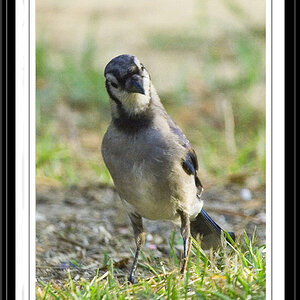
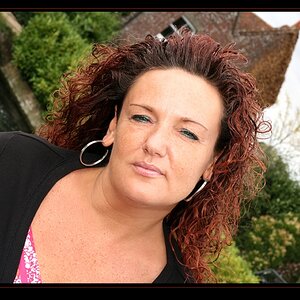
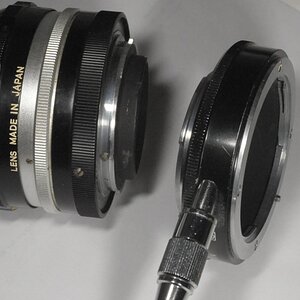
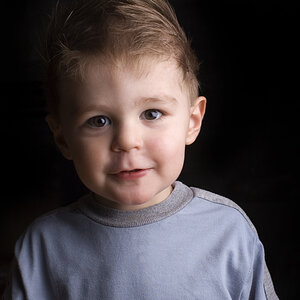
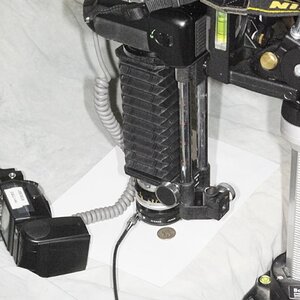
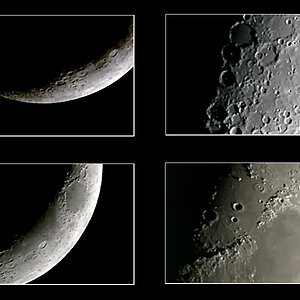
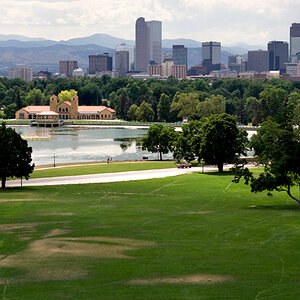

![[No title]](/data/xfmg/thumbnail/32/32633-d833b07b761b12c973eb0d27505935d4.jpg?1619735553)
